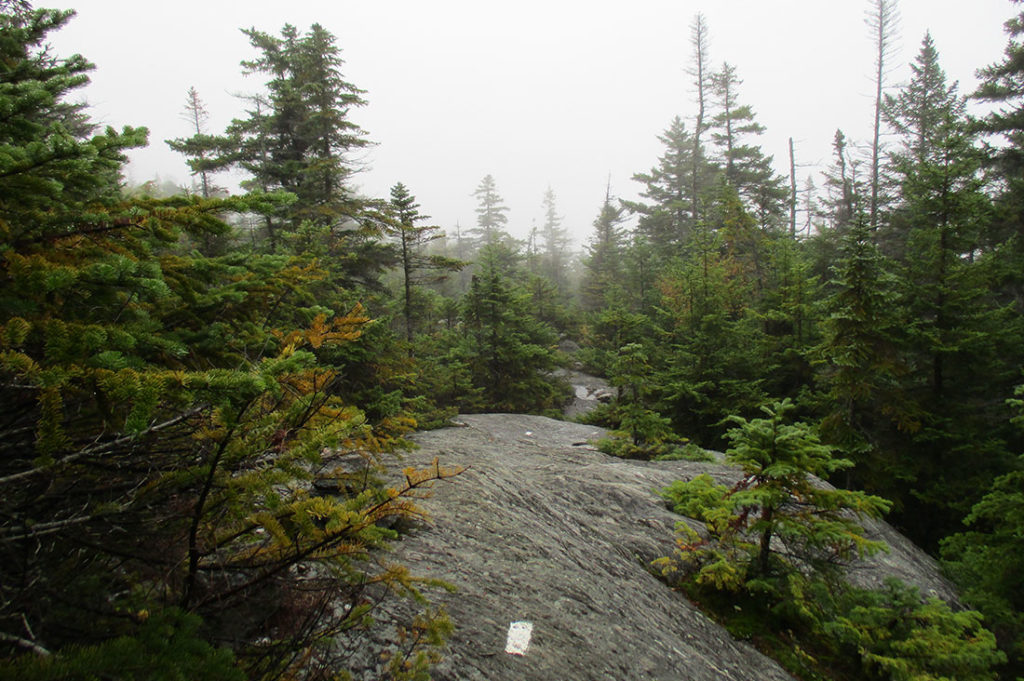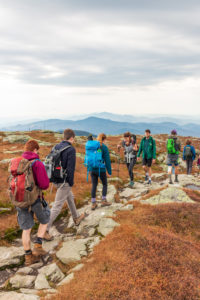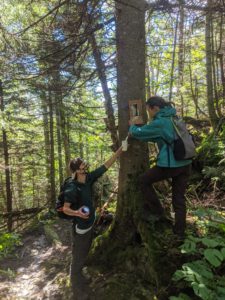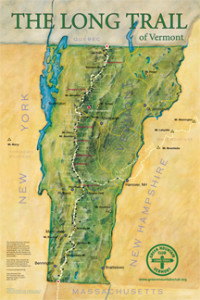
Long Trail Overview
- 272 miles
- 166 miles of side trails
- 70 backcountry campsites
- Oldest continuous footpath in the U.S.
- Perfect for day hikers, overnighters, and thru-hikers
Vermont’s Long Trail follows the main ridge of the Green Mountains from the Massachusetts-Vermont line to the Canadian border. Built between 1910 and 1930, it was the vision of James P. Taylor and later became the inspiration for the Appalachian Trail. The LT and AT share 100 miles of trail in the southern part of the state.
On the Long Trail, hikers encounter the best natural features Vermont has to offer, including pristine ponds, alpine sedge, hardwood forests, and swift streams. Known as the “footpath in the wilderness,” it is easy in few sections and rugged in most. Steep inclines and plenty of mud present hikers with plenty of challenges.
As maintainer and protector of the Long Trail, the Green Mountain Club works in partnership with the Green Mountain National Forest, State of Vermont, Appalachian Trail Conservancy, and private landowners to offer a world-class hiking trail.

Hiking the Long Trail
The Long Trail is truly the trail for everyone. Each year, hundreds of thru hikers set out to complete the trail in one go, a journey that has been completed in under 5 days but typically takes multiple weeks. Section hikers tackle the trail in bursts, often completing the Long Trail over the course of many years.
Hikers who hike every mile of the Long Trail, whether in day trips, multi-day sections, or all at once, are called “End-to-Enders” and are eligible to register for inclusion in the GMC’s official records.
Most trail users are day hikers, who enjoy desired destinations as day trips without camping out on the trail. See some of our recommended day hikes here.
Trail Marking

The Long Trail is marked by two-by-six-inch white “blazes” painted on trees, with double-blazes marking important turns. In open areas or on rocky summits, blazes are often painted on rocks; cairns and scree walls may also be used to define the trail. Hikers should exercise special care in the winter as the white blazes can be hard to see in the snow.
Property lines, snowmobile routes, and cross-country ski trails marked in various colors occasionally cross the route. The Long Trail can be distinguished from these by its well-worn footpath and standard white blazes.
Nearly all side trails are blazed in blue. In areas with many intersecting trails, some side trails may be blazed in yellow as well. Most intersections have signs, but it’s always a good idea to carry a map to confirm you are on your desired route.



















